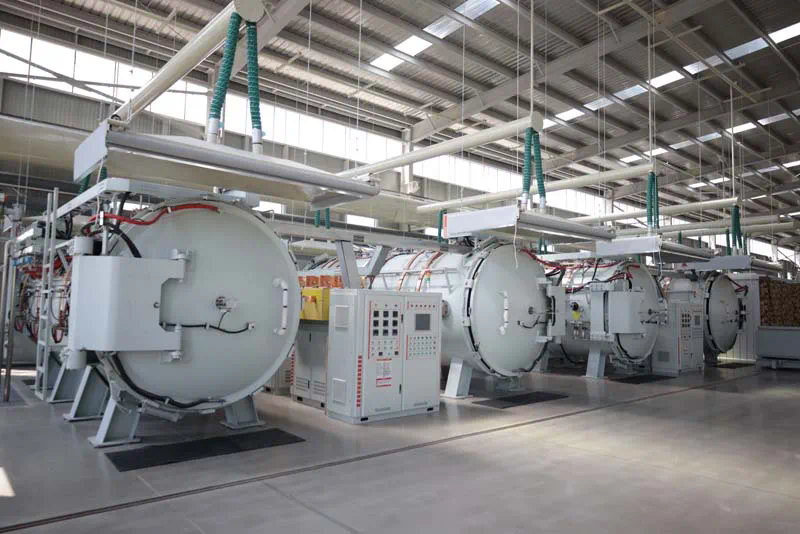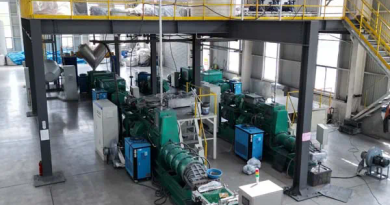Melting Point of Silicon Carbide- Why It Matters in Manufacturing
The melting point of silicon carbide (SiC) is a critical factor that influences its application in various manufacturing processes. Silicon carbide is a compound made of silicon and carbon, known for its remarkable hardness and thermal stability. This article explores the significance of SiC’s melting point in manufacturing, providing a detailed, professional, and comprehensive analysis.
Silicon carbide has gained prominence in manufacturing due to its exceptional properties, including high thermal conductivity, chemical resistance, and mechanical strength. These properties make it an ideal material for applications in high-temperature environments. Understanding its melting point is crucial for optimizing its use in different industrial processes.
The Fundamentals of Silicon Carbide
Silicon carbide is a compound of silicon and carbon, with a chemical formula of SiC. It exists in several crystalline forms, with the most common being alpha (α) and beta (β) SiC. The alpha form, also known as 4H-SiC, is the most thermodynamically stable and is used in many high-temperature applications.
Melting Point Characteristics
Silicon carbide has an exceptionally high melting point, which is typically around 2,700°C (4,892°F). This high melting point is a key factor in its use in demanding applications where other materials might fail. The high melting point of SiC contributes to its stability and durability under extreme conditions, making it an invaluable material in many industries.
Importance in Manufacturing

In manufacturing, the melting point of SiC plays a crucial role in various applications:
1. High-Temperature Processing:
SiC is used in applications that involve high temperatures, such as in furnace linings, kilns, and in the aerospace industry. Its high melting point ensures that it remains stable and does not deform or degrade under intense heat.
2. Semiconductor Industry:
SiC is widely used in the semiconductor industry for the production of high-power and high-frequency devices. The ability to withstand high temperatures without melting makes SiC an ideal material for power electronics, where reliability and efficiency are paramount.
3. Cutting Tools:

The hardness and thermal stability of SiC make it an excellent material for cutting tools and abrasives. Tools made from SiC can operate at high speeds and temperatures, providing superior performance and longevity compared to other materials.
4. Ceramic Applications:
SiC is used in advanced ceramic materials, which are employed in a variety of applications, including armor and wear-resistant coatings. The high melting point ensures that these ceramics maintain their integrity and performance in harsh environments.
Manufacturing Challenges and Considerations

Despite its advantages, working with SiC poses several challenges:
1. Processing Temperature:
The high melting point of SiC requires specialized equipment to process and shape the material. Manufacturers must use high-temperature furnaces and precise control systems to ensure the material is processed correctly.
2. Cost:
Due to the complex processing requirements, SiC can be more expensive compared to other materials. The cost of manufacturing and processing SiC must be weighed against its benefits in high-performance applications.
3. Machining Difficulties:
SiC’s hardness, while advantageous in many applications, also makes it difficult to machine. Special tools and techniques are required to cut and shape SiC without causing damage or reducing its effectiveness.
Advancements in SiC Technology
Recent advancements in SiC technology have focused on improving its performance and reducing manufacturing challenges:
1. Enhanced Purity:
Advances in crystal growth techniques have led to the production of higher purity SiC, which improves the material’s performance in electronic and high-temperature applications.
2. Improved Processing Techniques:
Innovations in processing technologies have made it possible to work with SiC more efficiently. Techniques such as chemical vapor deposition silicon carbide semiconductor (CVD) and high-temperature sintering are being refined to enhance the material’s properties and reduce production costs.
3. Applications Expansion:
New applications for SiC are continually being explored, including its use in electric vehicles and renewable energy systems. The material’s ability to operate at high temperatures and its efficiency in power electronics make it a valuable component in these emerging technologies.
Conclusion
The melting point of silicon carbide is a fundamental characteristic that underpins its utility in various manufacturing applications. Its high melting point contributes to its stability, durability, and performance in extreme conditions, making it an indispensable material in high-temperature processing, semiconductor technology, cutting tools, and advanced ceramics.
Understanding the significance of SiC’s melting point allows manufacturers to leverage its properties effectively, while ongoing advancements in SiC technology continue to expand its applications and improve its performance. As industries evolve and new challenges emerge, SiC will undoubtedly remain a critical material due to its unique combination of properties and its ability to withstand high temperatures.
In summary, the melting point of silicon carbide is not just a numerical value but a defining attribute that shapes its role in modern manufacturing. Its exceptional thermal stability and hardness make it a valuable asset in a wide range of high-performance applications, ensuring its continued relevance and importance in the industrial sector.
https://hearingearly.com/




